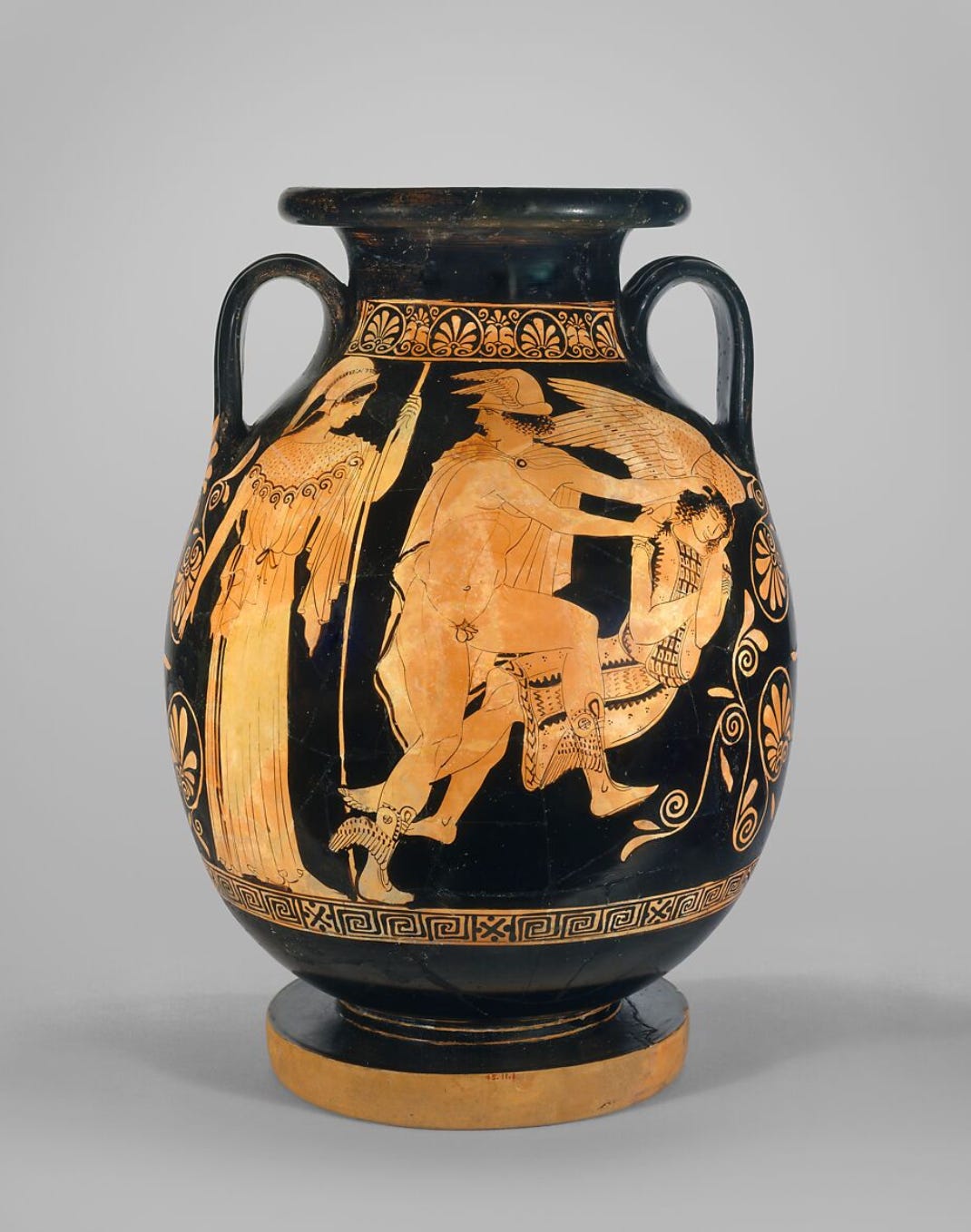Compiled by M., with assistance from Andrea Feeser, who teaches art history at Clemson | University, DOJ compliant. She is the co-author, among other works, of Waikiki: A History of Forgetting and Remembering.
For more information on our 2025 Hinternet Summer School, on “Scholarly Fabulation: Theories and Methods”, go here. To explore the other HSS work published so far, go here.
—The Editors
Ⱄ. FBI – INITIAL NOTES FOR PROFILE
Site analysis
Heads cut at neck, both genders, largely Caucasian, primarily middle age
Many mounted, in drawers and cabinets, hung on walls
Domestic rooms, walls bloody red, low light with heads spotlit
Orchestrated space – site lines and arrangements produce jolting contrasts
Data
Heads acquired from multiple locations – Rome, London, New York
Some explanatory writing
Dates provided demonstrate years of preparation and execution
Gathered observations
Those first present posted multiple photographs
Others identified heads, analyzed groupings
Specialists debated aesthetic choices
Potential objectives
Confirm head as seat of knowledge and power
Critique included persons’ dominance over others
Encased and hung “trophies” as retribution
Character
Highly intelligent, profoundly motivated, patient with high tolerance for pressure
Acquired financial and cultural capital to accomplish goals
Established network to execute agenda
WATCH – increasingly prolific, building reputation
Ask for profile length; describe heads’ conditions and provide available information about the individuals’ lives
Ⰺ. Review Draft
PROFILES IN ART
What’s On this Month: Keeping up with Florence Burgess Ivens
Curator Christine Falling has done it again with her follow-up to last year’s exhibition of Neoclassical sculpture at the Chandler Museum. From July 4, 2025, through July 4, 2026, the museum features her “Cameos from Antiquity through the Nineteenth Century: Portraits of Privilege and Power.” From small scale representations of Caesars set into fine jewelry, to Wedgwood plaques of nobles mounted as wall decoration, the cameos borrowed from collections in Rome, London, and New York impress in their variety and purpose. Falling selected pieces that represent important historical figures, and we learn from wall labels how these individuals defeated enemies, built empires, and amassed great wealth through warfare, colonization, slavery, and industry.
Falling arranged the cameos in drawers, cabinets, and on walls in rooms designed to look like aristocratic Neoclassical domestic spaces. Sharp contrasts produced by tight lines, bold color, and spotlighting arrest the eye and provoke unease. Together with texts that relay terrible histories, these choices make purely aesthetic engagement with the cameos nearly impossible.
Falling demonstrates that people from all walks of life used these objects to self-aggrandize. Classical rulers commissioned them as propaganda and for fealty. Eighteenth- and nineteenth-century nobles collected and displayed cameos to demonstrate learning. However, during this later period, cameos made their way into the lives of many so-called commoners. Falling demonstrates that Neoclassical cameos of the exalted —first carved into stone, then modeled from clay, and ultimately pressed into glass— went from worn and displayed luxury goods that marked elevated standing to inexpensive collectibles that signaled middle class sophistication. Falling’s thoroughly researched and beautifully illustrated catalogue, with essays by Classical and Neoclassical experts, is an important piece of scholarship that will impact the fields of decorative arts and material culture for years to come.
Ⰶ. Florence Ivens Progress Notes
8/18/25
Client statements:
Remains convinced she writes exhibition reviews for Art Now and completed a piece for it of which she is proud.
Contacted her imagined editor — emailed reviews editor listed on the journal masthead (received no reply).
Emailed exhibition curator to request an interview (received no reply).
Has begun researching Art History Ph.D. degrees — says she wants an academic job for further reach and impact.
Showed me an exhibition guide with cameo photos – she notated it heavily with text and drawing (made some heads appear severed)
Observations:
Appearance — exhausted, noticeable weight loss, continues to wear black and green exclusively; new snake tattoo on right hand (runs around the wrist to the back of the hand with the snake’s head on pointer finger).
Mood — manic (irritable, excitable, fixated on heads).
Behaviors — paced for the first 15 minutes but sat when I asked her to (she then twirled her hair and tapped her foot intermittently)
Clinical notes:
Florence maintains that she no longer has visual and auditory hallucinations. She will not discuss what they mean to her and stays secretive about what she was seeing and hearing (although she said at times she felt amongst the “ancients” and that snakes were present). Her delusions about employment continue and have amplified with her attempts to contact professionals with whom she believes herself to be associated. She rejects my efforts to question her experience and understanding of her work as a critic. Her parents continue to support her financially, so she can use her time as she wishes; they, as well as her sister, have no interest in seeing Florence and according to her, she still has no contact with them. She only leaves her apartment for morning coffee, to visit art exhibitions (at least one a day, repeatedly viewing those she likes best while skipping openings so that she doesn’t see her family), and to spend at least three hours in the Classical art galleries of two local museums.
Plan
Florence has been psychotic for one month. Consult Dr. Luger again about her medication and discuss whether we can steer her toward in-patient care (at present she is not a danger to herself or others). Florence does not seem to be responding to her most recently prescribed mood stabilizer, and I suspect she may stop taking it. She no longer appears determined to obtain family approval but her pursuit of a career in art suggests she wants to mirror and perhaps supersede their cultural sophistication and cachet. Florence’s motivation is not just to enhance self-esteem but also tied to a sense of purpose she has yet to articulate.
Ⱙ.
I she found. I she heard in silence. Stone not she. Stone by me enemies she saw. The papers I took.
Hard is making this language but you must know. Clean it machine —
I waited long for understanding. Next to those who made me thus. Suffer forever Poseidon, Athena, Perseus, and Hermes. They are stone in this place and have no more power. I found peace in stone. My eyes no longer look.
Never again a defiled, decapitated weapon. She showed truth. Others’ heads channel horror. Not mine.
May her head calm and mind free.
Μέδουσα





Perhaps the subject could, like Richard Babely (known as Mr. Dick), go fly a kite full of her Charleses?
https://open.substack.com/pub/lawrencegray/p/devil-land?r=1wzf9l&utm_medium=ios